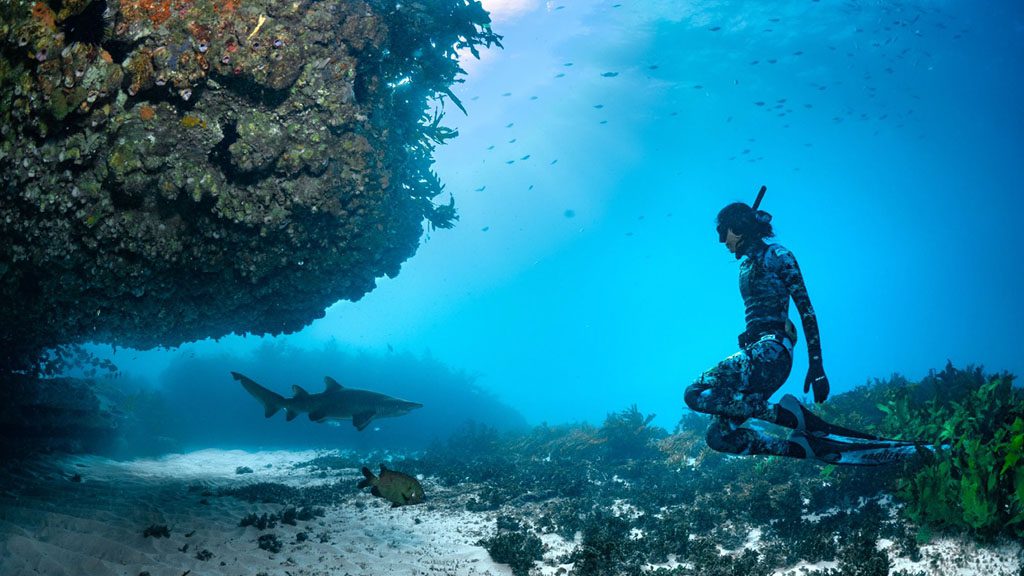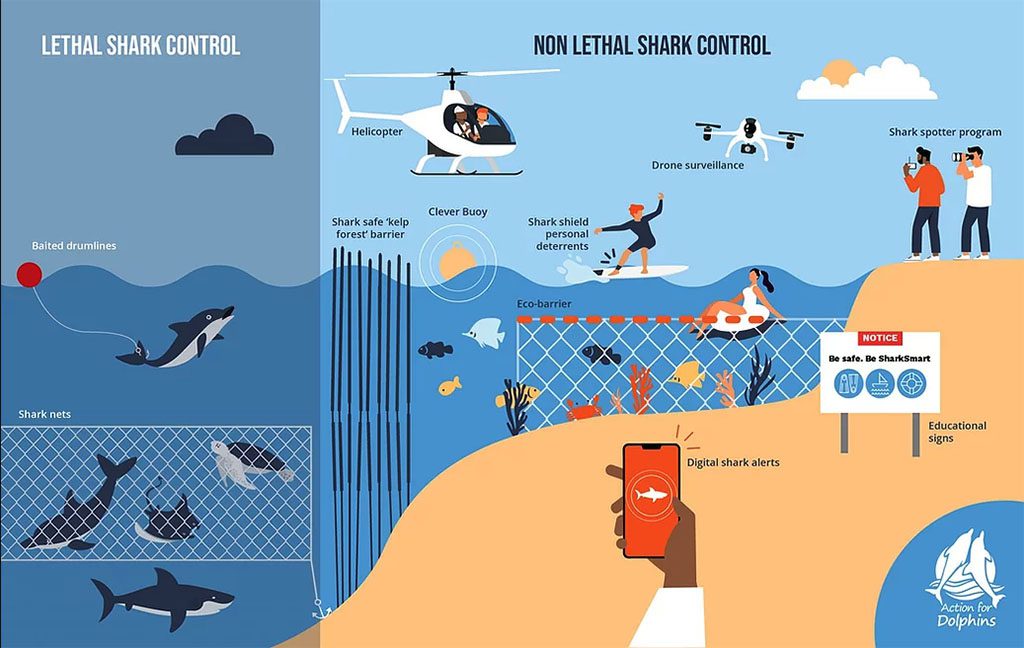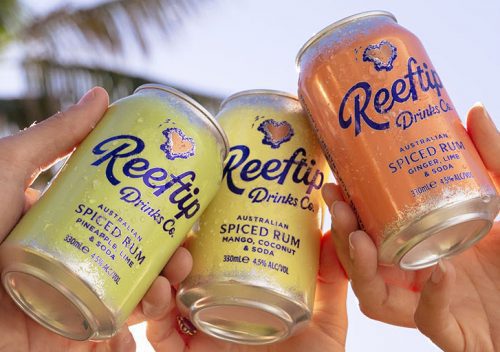Spring has sprung, bringing with it warmer weather, blooming wildflowers and… the return of shark nets to many of the beaches along the NSW and QLD coast.
Ocean lovers have been campaigning against shark nets for many years, and yet they remain part of the shark mitigation strategy on the east coast of Australia, even though several other mitigation methods have been researched and tested, some of which prove more effective.
Back in 2015 a Shark Summit was held in Sydney, a meeting of minds for the NSW Department of Primary Industries (DPI) with shark experts from around the world. From this came the NSW Government’s $16 million Shark Management Strategy – a scientifically driven investigation of new and emerging technologies to protect beachgoers via both detection and deterrence, and minimise harm to sharks and marine animals. We’re finally seeing some positive results from this strategy.
But, despite the addition of numerous mitigation techniques, and calls from several local councils to remove the nets … the nets remain. This summer, mitigation strategies in NSW include:
- Scaling up Surf Life Saving NSW’s drone surveillance program to provide more beach coverage in more Local Government Areas (LGA’s)
- Increasing coastal surveillance using VR4G listening stations to ensure at least one in every LGA
- Expanding the rollout of SMART (Shark Management Alert in Real Time) drumline technology
- Continuation of beach meshing; and
- Boosting shark tagging, research and community education programs.

So the nets remain, providing beachgoers with a false sense of security against the rare possibility of a shark incident, and killing hundreds of thousands of harmless marine creatures in the process, including rays, turtles, dolphins, migrating humpback whales and critically endangered – harmless – species such as grey nurse sharks.
Saving Norman
A new campaign to remove shark nets, ‘Saving Norman’, focusses on Bondi’s population of critically endangered grey nurse sharks. The campaign was launched by a group of passionate locals, which has been using time spent in lock down to document resident grey nurse sharks. They have so far identified 40 individuals aggregating in Bondi, and are now using this data, as well as a petition on Change.org, as leverage to pressure DPI into considering Bondi as a new aggregation site.

One of the driving forces behind this campaign, Sarah Han deBeaux, explains.
“Bondi Beach is arguably one of Australia’s most iconic beaches. The ancient Aboriginal rock carvings in North Bondi show an abundance of marine life, including sharks, that the Indigenous community cared for over thousands of years. During lockdown, local divers have been gathering evidence of the resident grey nurse shark (GNS) population in Bondi and we can now prove that a significant number aggregate in Bondi and return year on year. We collected a database of over 40 unique individuals.
“Jason Eggledon, the aerial photographer behind popular Instagram account: @DroneSharkApp, has made the underwater world more accessible to the public by posting videos of the sharks, rays, seals and whales, giving names to various marine locals, Alex the Seal, Raymond the Stingray, and increasingly, people have begun affectionately referring to Norman the grey nurse shark.”
And so became the Saving Norman campaign.

Why are grey nurse sharks endangered?
In Australia there are two separate and distinct populations of GNS: an east coast and a west coast population. The east coast population is listed as Critically Endangered by both federal and NSW state governments, which means they should receive the greatest level of protection in Australia.
“The GNS population was actively decimated in the 1960-1980’s due to their fierce appearance and the perception that they were ‘man-eating’. GNS are one of the slowest breeding sharks we know about. They are ovoviviparous, meaning the young hatch inside the womb, with the young eating each other until birth, when only two pups will be born. Females become sexually active from between 5-8 years old and only breed once every 2 years after that making population recovery a slow process.”
As to current threats?
“The deployment of shark nets is one of many pressures facing GNS, which also includes accidental fishing and documented damage the hooks cause internally. While it difficult to halt fishing activities in areas where GNS are found, the one thing that the public could and should get behind is the removal of the shark nets.”

As most readers here will know, shark nets do not create a total barrier between swimmers and sharks. They are about 150-170 metres long, six metres high and are placed below the surface suspended between two and eight metres from the sea floor. Sharks can swim under, around and over them.
“Non-lethal alternatives are being used in elsewhere in Australia and overseas, so it is surprising that the NSW state government seems adamant to hold on to these outdated practices.”

What are the campaign objectives?
“Saving Norman aims to raise awareness, increase protection, and gain momentum to remove the lethal shark nets that have killed several GNS in recent years. Tagged GNS have been recorded migrating over 800 km between aggregation sites, returning to the same sites in consecutive years, so it is important to get these Bondi sites recognised officially – and not place nets right next to them.”
Saving Norman campaign goals include:
- Register Bondi as a new official GNS aggregation site critical for their recovery.
- Install signage explaining DPI’s GNS Code of Conduct to educate the public about how to behave around them.
- Seek to remove Bondi’s lethal shark nets.
How you can help
The team behind Saving Norman needs strong community support to get the nets replaced and to get the site listed as an aggregation area.
-
- If you have any GNS photos from Bondi over the last ten years, please upload them to www.spotashark.com.
- A petition has been launched on change.org. Please support the campaign and share it with your networks.
- Learn more about the Norman and his friends here: www.savingnorman.com.au



